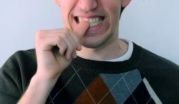(Press-News.org) WASHINGTON D.C., April 22, 2014 -- By combining the powers of two single-atom-thick carbon structures, researchers at the George Washington University's Micro-propulsion and Nanotechnology Laboratory have created a new ultracapacitor that is both high performance and low cost.
The device, described in the Journal of Applied Physics, capitalizes on the synergy brought by mixing graphene flakes with single-walled carbon nanotubes, two carbon nanostructures with complementary properties.
Ultracapacitors are souped-up energy storage devices that hold high amounts of energy and can also quickly release that energy in a surge of power. By combining the high energy-density properties of batteries with the high power-density properties of conventional capacitors, ultracapacitors can boost the performance of electric vehicles, handheld electronics, audio systems and more.
Single-walled carbon nanotubes and graphene both have unique and excellent electronic, thermal, and mechanical properties that make them attractive materials for designing new ultracapacitors, said Jian Li, first author on the paper. Many groups had explored the use of the two materials separately, but few had looked at combining them, he said.
"In our lab we developed an approach by which we can obtain both single-walled carbon nanotubes and graphene, so we came up with the idea to take advantage of the two promising carbon nanomaterials together," added Michael Keidar, a professor in the Department of Mechanical and Aerospace Engineering in the School of Engineering and Applied Science at GW, and director of the Micro-propulsion and Nanotechnology Laboratory.
The researchers synthesized the graphene flakes and nanotubes by vaporizing a hollow graphite rod filled with metallic catalyst powder with an electric arc. They then mixed the two nanostructures together to form an ink that they rolled onto paper, a common separator for current commercial capacitors.
The combination device's specific capacitance, a measurement of the performance of a capacitor per unit of weight, was three times higher than the specific capacitance of a device made from carbon nanotubes alone.
The advantage of the hybrid structure, Li explained, is that the graphene flakes provide high surface area and good in-plane conductivity, while the carbon nanotubes connect all of the structures to form a uniform network.
While other types of ultracapacitors have also achieved the high specific capacitance of the graphene/nanotube hybrid, the researchers say, the main advantage of the combination approach is its low costs, since the team has developed a simple way to manufacture large amounts of the desirable mix of carbon nanostructures.
The hybrid ultracapacitor is also small and light, an advantage as electronic devices get ever smaller.
INFORMATION:
MORE INFORMATION: The George Washington University's Micro-propulsion and Nanotechnology Laboratory: https://www.mpnl.seas.gwu.edu
The article, "Paper-based ultracapacitors with carbon nanotubes-graphene composites" is authored by Jian Li, Xiaoqian Cheng, Jianwei Sun, Cameron Brand, Alexey Shashurin, Mark Reeves and Michael Keidar. It will be published in the Journal of Applied Physics on April 22, 2014 (DOI: 10.1063/1.4871290). After that date, it can be accessed at:
http://scitation.aip.org/content/aip/journal/jap/115/16/10.1063/1.4871290
This work was supported by the NSF/DOE Partnership in Plasma Science and Technology (NSF Grant No. CBET-0853777 and DOE Grant No. DE-SC0001169), and an NSF Award (Title: EAGER: Exploring plasma mechanism of synthesis of graphene in arc discharge, NSF Award No. 1249213).
ABOUT THE JOURNAL
Journal of Applied Physics, published by the American Institute of Physics, is an influential international journal publishing significant new experimental and theoretical results of applied physics research. See: http://jap.aip.org
High-performance, low-cost ultracapacitors built with graphene and carbon nanotubes
Future devices based on technology could bridge gap between batteries and conventional capacitors in portable electronics and hybrid electric vehicles
2014-04-22
ELSE PRESS RELEASES FROM THIS DATE:
International team sequences rainbow trout genome
2014-04-22
PULLMAN, Wash.—Using fish bred at Washington State University, an international team of researchers has mapped the genetic profile of the rainbow trout, a versatile salmonid whose relatively recent genetic history opens a window into how vertebrates evolve.
The 30-person team, led by Yann Guiguen of the French National Institute for Agricultural Research, reports its findings this week in Nature Communications.
The investigators focused on the rate at which genes have evolved since a rare genome doubling event occurred in the rainbow trout approximately 100 million years ...
Wildlife response to climate change is likely underestimated, experts warn
2014-04-22
AMHERST, Mass. – Analyzing thousands of breeding bird surveys sent in by citizen scientists across the western United States and Canada over 35 years, wildlife researchers report that most of the 40 songbird species they studied shifted either northward or toward higher elevation in response to climate change, but did not necessarily do both.
This means that most previous studies of potential climate change impacts on wildlife that looked only at one factor or the other have likely underestimated the effects of environmental warming, say research wildlife biologists ...
Vacuum ultraviolet lamp of the future created in Japan
2014-04-22
WASHINGTON D.C., April 22, 2014 -- A team of researchers in Japan has developed a solid-state lamp that emits high-energy ultraviolet (UV) light at the shortest wavelengths ever recorded for such a device, from 140 to 220 nanometers. This is within the range of vacuum-UV light -- so named because while light of that energy can propagate in a vacuum, it is quickly absorbed by oxygen in the air.
This fact makes vacuum UV light extremely useful for industrial applications from sterilizing medical devices to cleaning semiconductor substrates because when it strikes oxygen-containing ...
Applying math to biology: Software identifies disease-causing mutations in undiagnosed illnesses
2014-04-22
(SALT LAKE CITY)–A computational tool developed at the University of Utah (U of U) has successfully identified diseases with unknown gene mutations in three separate cases, U of U researchers and their colleagues report in a new study in The American Journal of Human Genetics. The software, Phevor (Phenotype Driven Variant Ontological Re-ranking tool), identifies undiagnosed illnesses and unknown gene mutations by analyzing the exomes, or areas of DNA where proteins that code for genes are made, in individual patients and small families.
Sequencing the genomes of individuals ...
New electric fish genus and species discovered in Brazil's Rio Negro
2014-04-22
AMHERST, Mass. – Scientists at the University of Massachusetts Amherst and the Instituto Nacional de Pesquisas da Amazônia (INPA), Brazil, this week report that they have discovered a new genus and species of electric knifefish in several tributaries of the Negro River in the Amazonia State of Brazil.
Professor Cristina Cox Fernandes at UMass Amherst, with Adília Nogueira and José Antônio Alves-Gomes of INPA, describe the new bluntnose knifefish in the current issue of the journal Proceedings of the Natural Sciences of Philadelphia.
Their paper offers details about ...
Neurotics don't just avoid action: They dislike it
2014-04-22
PHILADELPHIA (April 22, 2014) – That person we all seem to know who we say is neurotic and unable to take action? Turns out he or she isn't unable to act but simply doesn't want to.
A study of nearly 4,000 college students in 19 countries has uncovered new details about why neurotic people may avoid making decisions and moving forward with life. Turns out that when they are asked if action is positive, favorable, good, they just don't like it as much as non-neurotics. Therefore persuasive communications and other interventions may be useful if they simply alter ...
More than two-thirds of Americans support mandated coverage of birth control in health plans
2014-04-22
ANN ARBOR, Mich. — Nearly 7 in 10 Americans support mandated coverage of birth control medications, according to a new national survey by researchers at the University of Michigan Health System.
Women, blacks, Hispanics, parents with children under the age of 18 at home, and adults with private or public insurance were significantly more likely than other adults to support universal coverage of birth control medications, according to the findings that appear in the Journal of the American Medical Association (JAMA).
Individuals from all 50 states and the District of ...
First size-based chromatography technique for the study of livi
2014-04-22
Using nanodot technology, Berkeley Lab researchers have demonstrated the first size-based form of chromatography that can be used to study the membranes of living cells. This unique physical approach to probing cellular membrane structures can reveal information critical to whether a cell lives or dies, remains normal or turns cancerous, that can't be obtained through conventional microscopy.
"We've developed membrane-embedded nanodot array platforms that provide a physical means to both probe and manipulate membrane assemblies, including signaling clusters, while they ...
Scientists alter fat metabolism in animals to prevent most common type of heart disease
2014-04-22
Working with mice and rabbits, Johns Hopkins scientists have found a way to block abnormal cholesterol production, transport and breakdown, successfully preventing the development of atherosclerosis, the main cause of heart attacks and strokes and the number-one cause of death among humans. The condition develops when fat builds inside blood vessels over time and renders them stiff, narrowed and hardened, greatly reducing their ability to feed oxygen-rich blood to the heart muscle and the brain.
In a series of experiments, described April 7 in the journal Circulation, ...
Routine blood glucose measurements can accurately estimate hemoglobin A1c in diabetes
2014-04-22
New Rochelle, NY, April 22, 2014—Hemoglobin A1c is the standard measurement for assessing glycemic control over time in people with diabetes. Blood levels of A1c are typically measured every few months in a laboratory, but now researchers have developed a data-based model that accurately estimates A1c using self-monitored blood glucose (SMBG) readings, as described in Diabetes Technology & Therapeutics (DTT), a peer-reviewed journal from Mary Ann Liebert, Inc., publishers. The article is available free on the DTT website at http://www.liebertpub.com/dtt.
In "Accuracy ...
LAST 30 PRESS RELEASES:
Drone sampling of whale breath reveals first evidence of potentially deadly virus in Arctic
Roman soldiers defending Hadrian’s Wall infected by parasites, study finds
Pinochet’s prisoners were tormented with music but still found solace in it, a new book reveals
Fertility remains high in rural Tanzania despite access to family planning
AI-assisted device can improve autism care access
Kinetic careers
Uncovering how parasitic plants avoid attacking themselves to improve crop resistance
Nanoparticle vaccine strategy could protect against Ebola and other deadly filoviruses
Study finds brain care score can predict risk of stroke across racial groups
Key lung immune cells can intensify allergic reactions
Do hormones explain why women experience more gut pain?
New materials conduct ions in solids as easily as in liquids
Breakthrough of the Year: Renewable energy begins to eclipse fossil fuel-based sources
LLM use is reshaping scientific enterprise by increasing output, reducing quality and more
Introducing LightGen, a chip for ultra-fast, ultra-efficient generative AI
Astronomers see fireworks from violent collisions around nearby star
ACC/AHA issue new guideline on managing congenital heart disease in adults
Cosmic crash caught on camera
Is talented youth nurtured the wrong way? New study shows: top performers develop differently than assumed
Ants: An untapped resource in the development of antibiotics?
Archaeologists use AI to create prehistoric video game
Mitochondria migrate toward the cell membrane in response to high glucose levels
Tiny viral switch offers hope against drug-resistant bacteria
Most parents aware of early peanut introduction guidelines, but confused about details
HPV vaccine can protect against severe lesions of the vulva and vagina
Virtual care provision and emergency department use among children and youth
Quadrivalent HPV vaccine and high-grade vulvovaginal lesions
Insights into dry eyes gained from stem cell-derived tear glands
Researchers identify 166 human pluripotent stem cell lines available for use in clinical applications
Europa Clipper instrument uniquely observed interstellar comet 3I/ATLAS
[Press-News.org] High-performance, low-cost ultracapacitors built with graphene and carbon nanotubesFuture devices based on technology could bridge gap between batteries and conventional capacitors in portable electronics and hybrid electric vehicles





